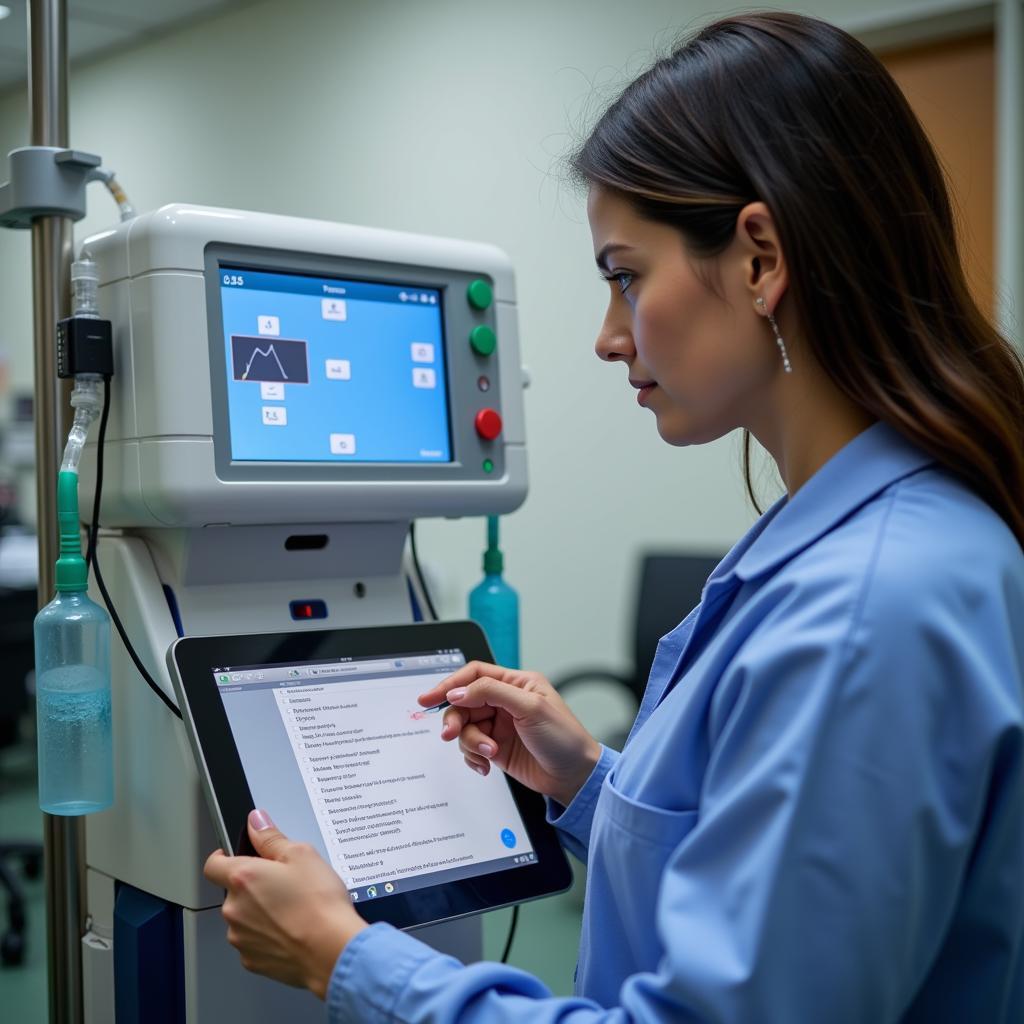Onsite Hospital Equipment Management is a critical aspect of ensuring seamless healthcare operations. It encompasses the strategic planning, acquisition, maintenance, and replacement of all medical devices and equipment within a healthcare facility. Effective onsite management ensures that equipment is readily available, functioning optimally, and compliant with safety standards, ultimately contributing to positive patient outcomes and overall operational efficiency.
The Pillars of Effective Onsite Hospital Equipment Management
A robust onsite hospital equipment management system relies on several key components:
1. Equipment Planning and Acquisition:
Strategic planning forms the bedrock of successful equipment management. This involves:
- Needs Assessment: Conducting a thorough analysis of current and projected equipment needs based on factors like patient volume, service lines, and technological advancements.
- Budgeting and Prioritization: Allocating resources effectively, prioritizing equipment purchases based on criticality and return on investment.
- Vendor Selection: Evaluating and selecting reputable vendors who offer quality equipment, reliable maintenance services, and competitive pricing.
 Hospital staff in a meeting discussing equipment planning
Hospital staff in a meeting discussing equipment planning
2. Inventory Control and Tracking:
Maintaining accurate equipment inventory is crucial for:
- Real-time Visibility: Employing a robust system to track the location, status, and maintenance history of every piece of equipment.
- Minimizing Loss and Theft: Implementing security measures such as RFID tagging and barcode scanning to deter theft and misplacement.
- Optimizing Utilization: Identifying underutilized equipment to redeploy resources effectively and avoid unnecessary purchases.
3. Preventive Maintenance and Calibration:
Regular maintenance is essential for:
- Extending Equipment Lifespan: Adhering to manufacturer-recommended maintenance schedules to prevent premature breakdowns.
- Ensuring Accuracy and Safety: Calibrating equipment regularly to maintain accuracy and ensure patient safety.
- Minimizing Downtime: Scheduling preventive maintenance during non-peak hours to minimize disruption to patient care.
 A technician reviewing a maintenance checklist for medical equipment
A technician reviewing a maintenance checklist for medical equipment
4. Repair and Replacement Strategies:
Developing efficient strategies for handling equipment breakdowns and replacements is essential. This includes:
- Timely Repairs: Establishing clear protocols for reporting malfunctions and ensuring timely repairs by qualified technicians.
- Replacement Planning: Proactively planning for equipment replacement based on factors like age, usage, and obsolescence.
- End-of-Life Management: Disposing of obsolete equipment responsibly, adhering to environmental regulations and data security protocols.
5. Technology Integration:
Leveraging technology is key to streamlining onsite hospital equipment management:
- Computerized Maintenance Management Systems (CMMS): Implementing a CMMS to automate tasks such as maintenance scheduling, tracking work orders, and managing equipment records.
- Internet of Things (IoT) Applications: Utilizing IoT sensors to monitor equipment performance in real-time, enabling predictive maintenance and minimizing downtime.
- Data Analytics: Harnessing data analytics to identify trends, optimize equipment utilization, and make informed decisions regarding purchasing and maintenance.
 A digital dashboard displaying real-time equipment data
A digital dashboard displaying real-time equipment data
The Benefits of Streamlined Onsite Hospital Equipment Management
Effective onsite hospital equipment management offers numerous advantages:
- Enhanced Patient Safety: Well-maintained equipment reduces the risk of malfunctions and errors, ensuring patient safety during critical procedures.
- Improved Operational Efficiency: Minimizing equipment downtime and streamlining maintenance processes enhances overall operational efficiency and staff productivity.
- Reduced Costs: Proactive maintenance and strategic replacement planning can significantly reduce repair costs and extend the lifespan of valuable medical equipment.
- Increased Regulatory Compliance: A robust equipment management system helps healthcare facilities adhere to stringent safety and regulatory requirements.
Conclusion
Onsite hospital equipment management is not just about maintaining machinery; it’s about safeguarding patient well-being, optimizing resources, and ensuring the smooth operation of a critical healthcare environment. By implementing a comprehensive and proactive approach, hospitals can reap the significant rewards of streamlined equipment management, ultimately contributing to a higher standard of care and a more efficient healthcare system.
Frequently Asked Questions
- What is the role of a biomedical technician in onsite hospital equipment management? Biomedical technicians play a vital role in equipment maintenance, repair, and safety testing, ensuring that medical devices are functioning correctly and safely for patient use.
- How can hospitals ensure the cybersecurity of their medical equipment? Implementing strong passwords, regularly updating software, and partnering with reputable vendors who prioritize cybersecurity are crucial steps in protecting medical devices from cyber threats.
Need support with onsite hospital equipment management? Contact us at Phone Number: 02437655121, Email: [email protected] or visit us at: 298 Cau Dien Street, Minh Khai, Bac Tu Liem, Hanoi, Vietnam. We have a dedicated customer service team available 24/7.